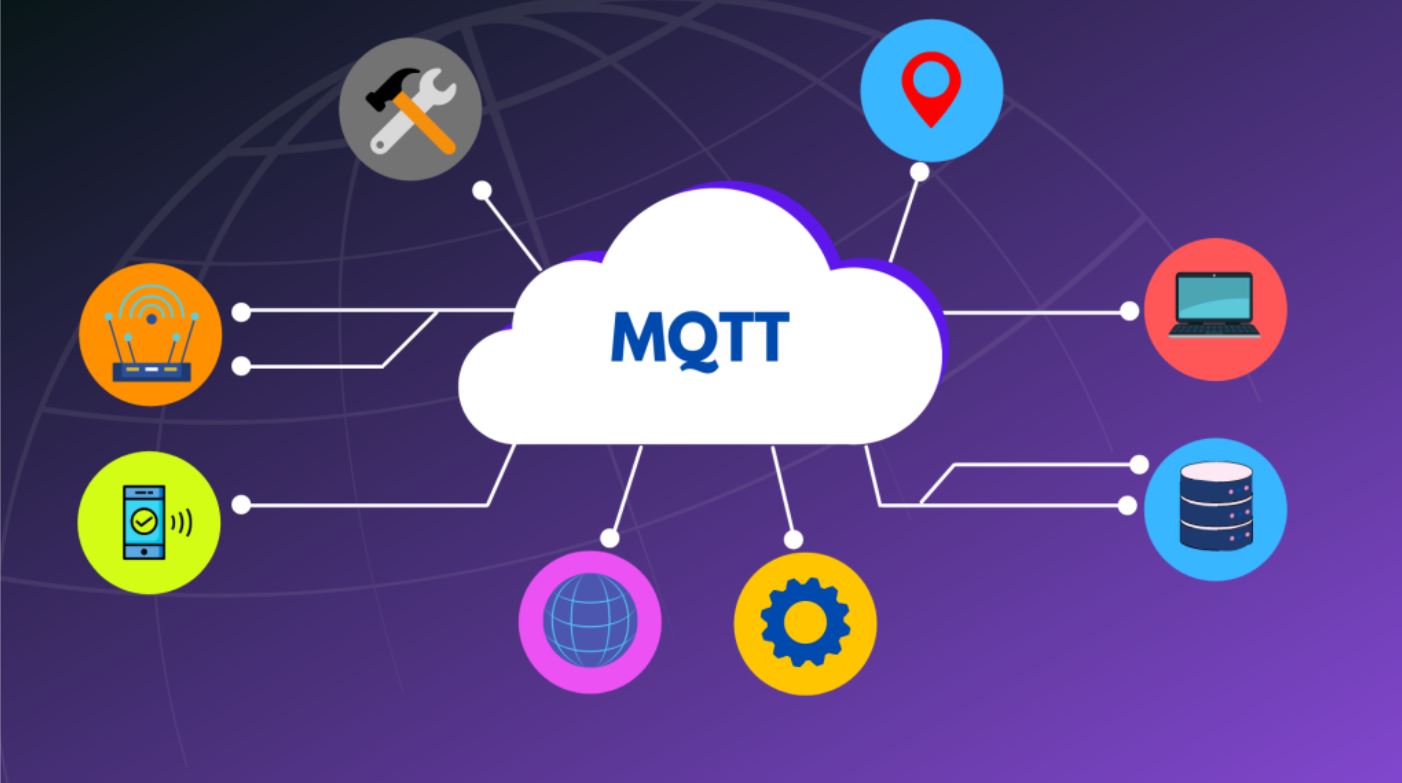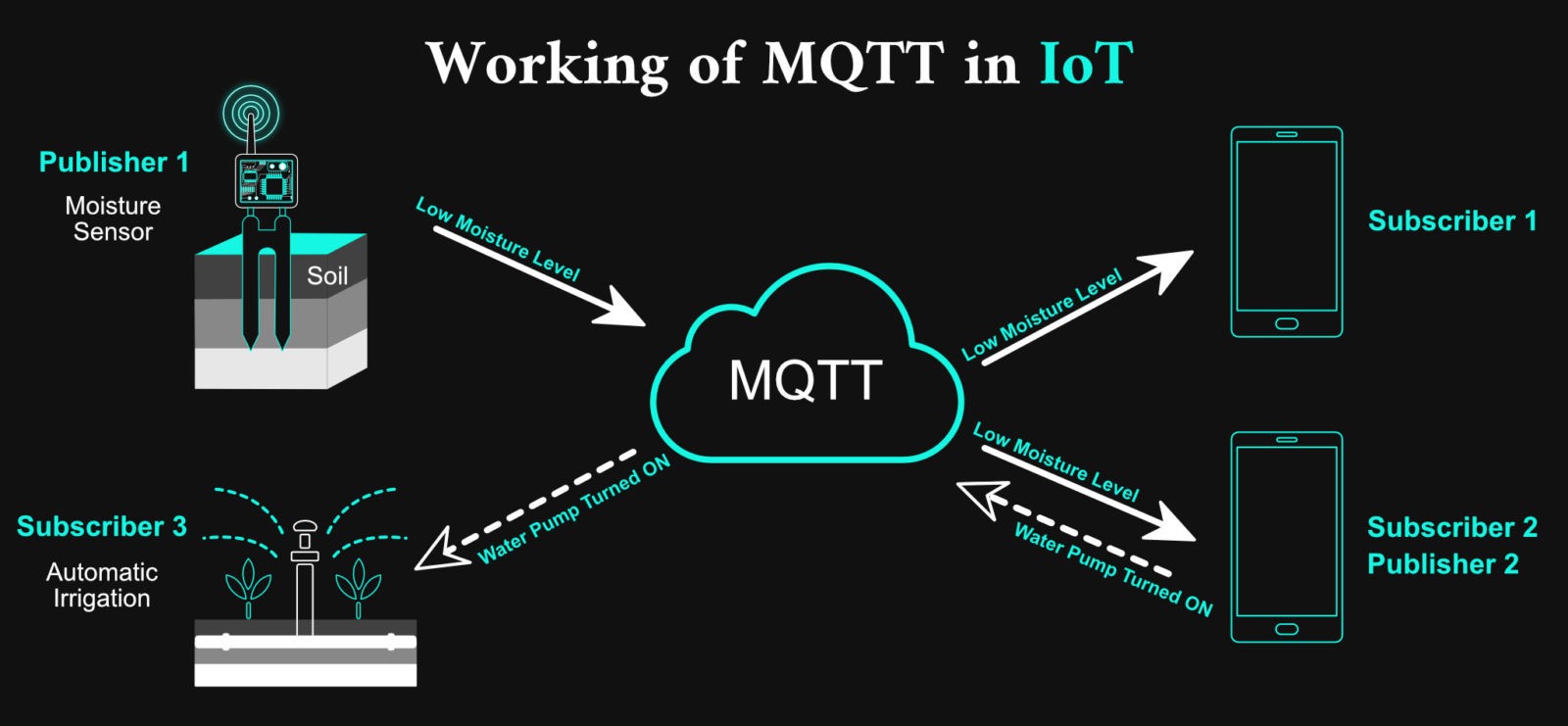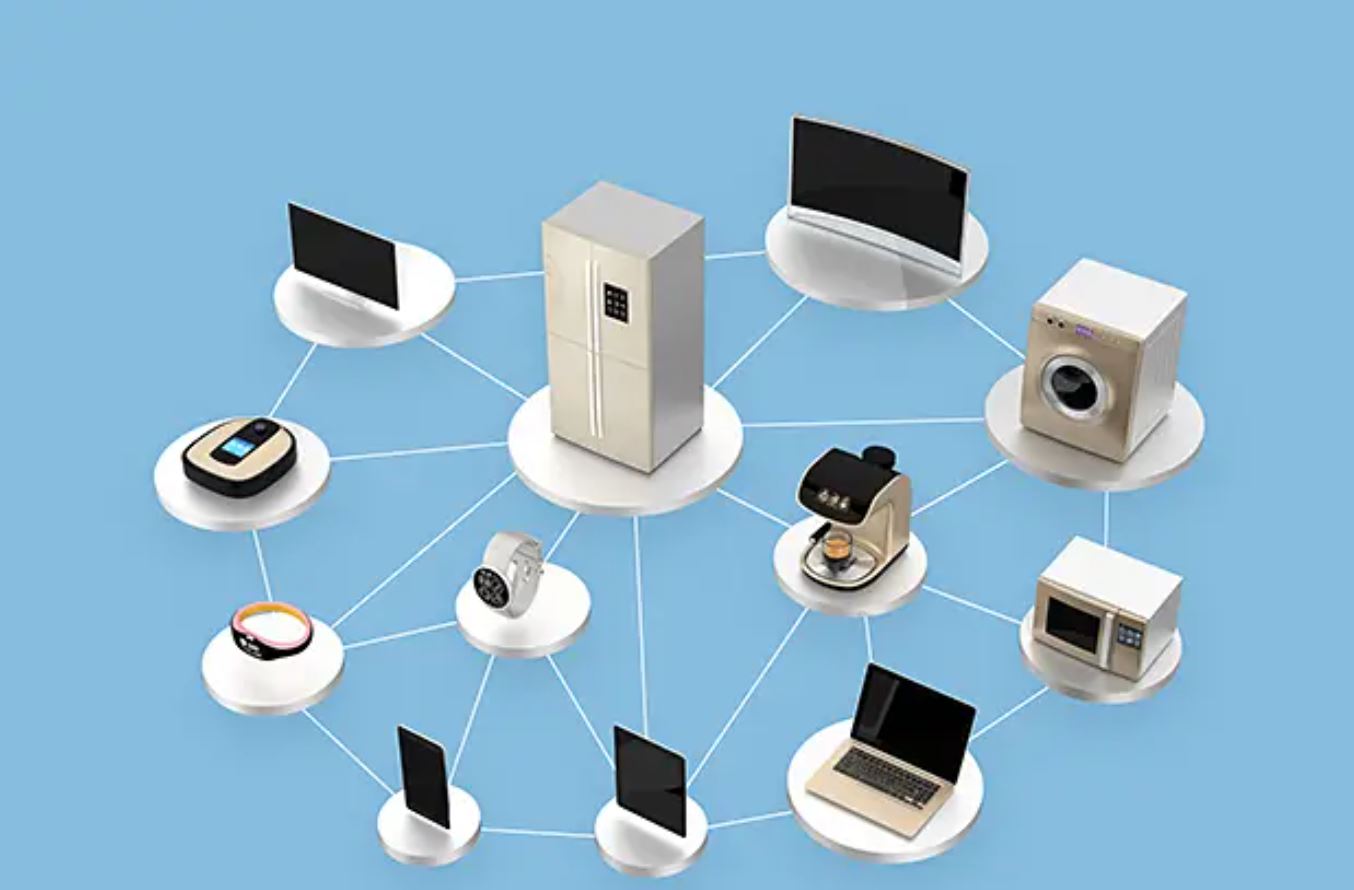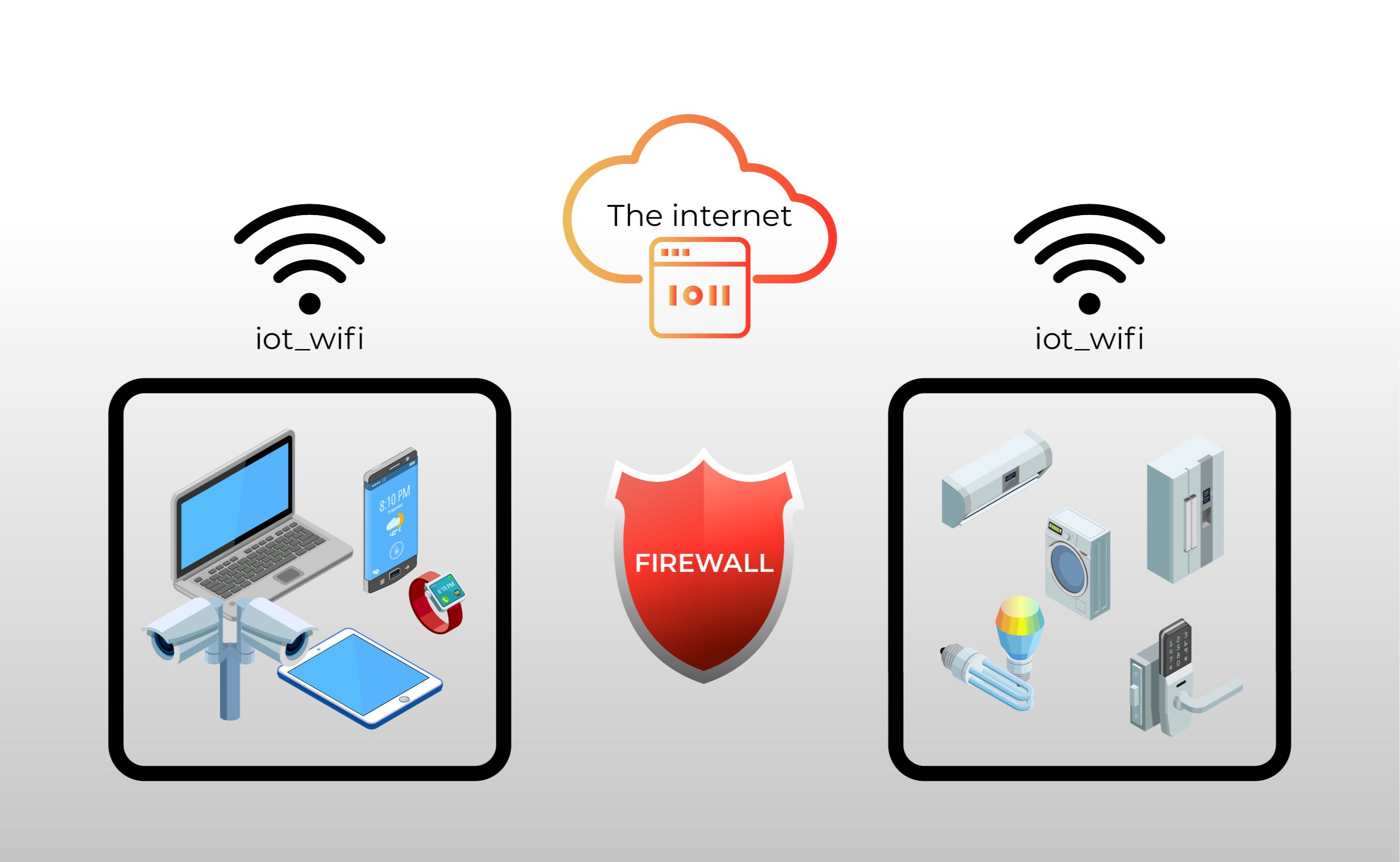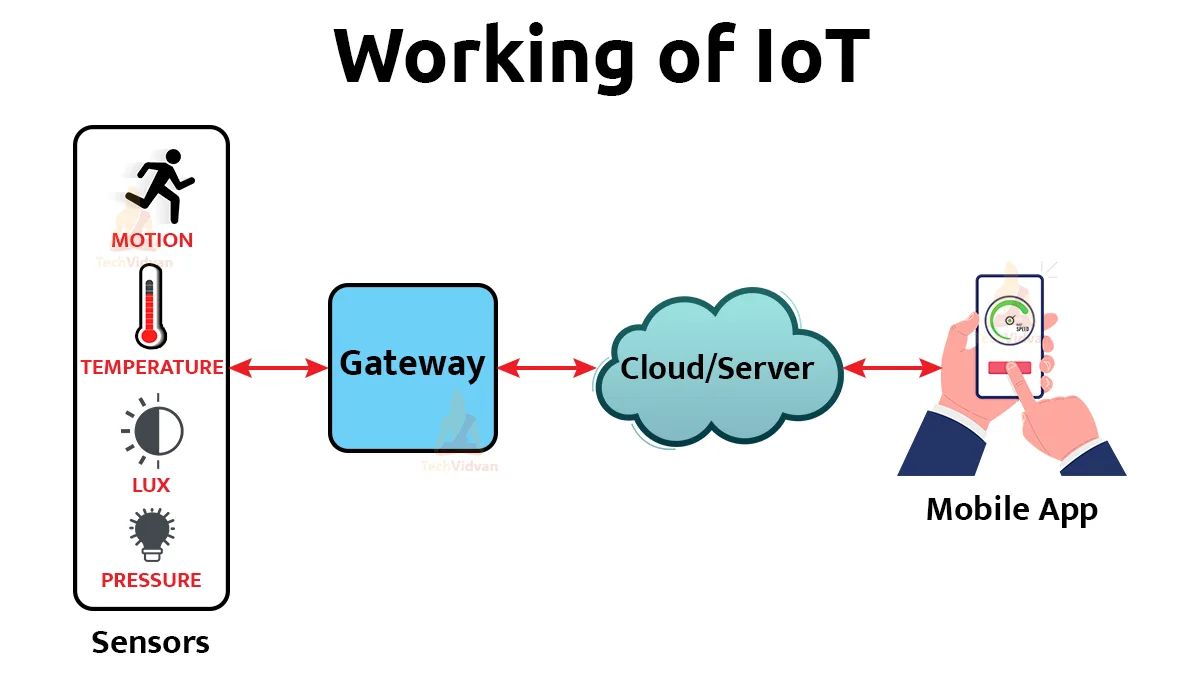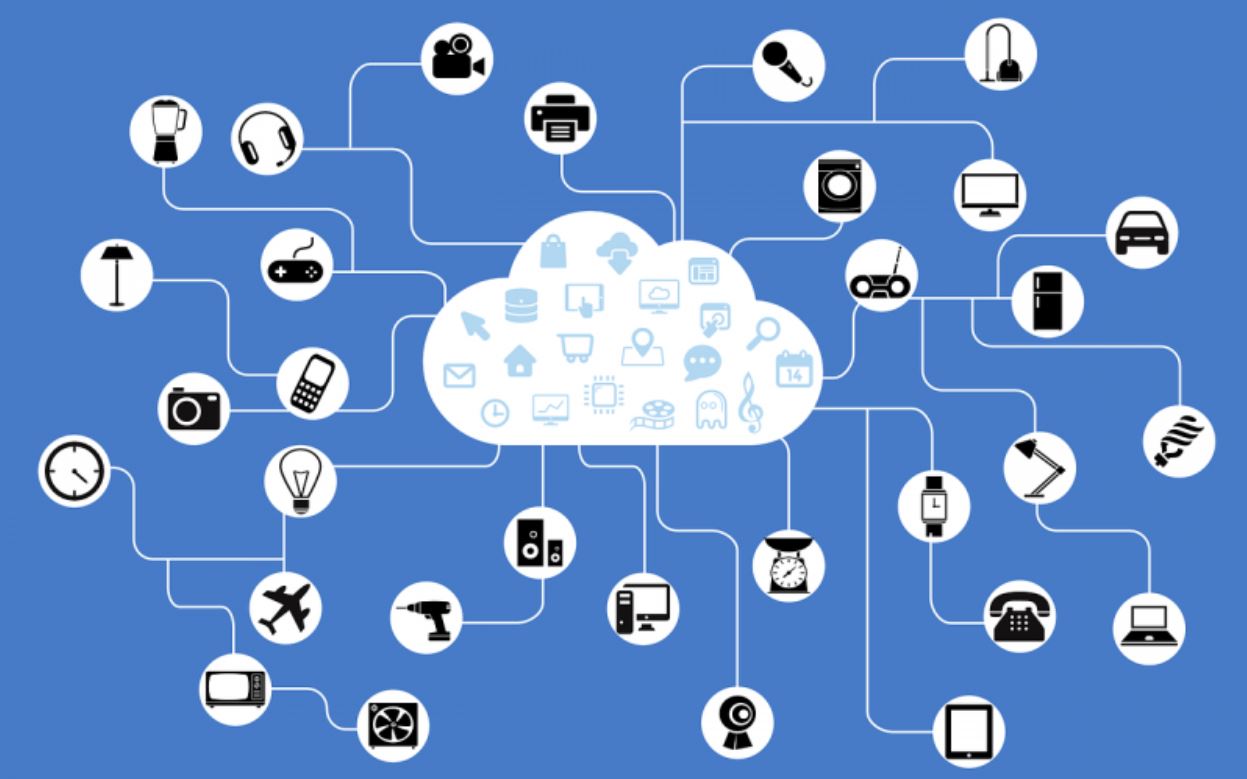Introduction
When it comes to connecting and communicating with devices in the Internet of Things (IoT) ecosystem, a lightweight and efficient messaging protocol is essential. MQTT, or Message Queuing Telemetry Transport, is a widely used protocol designed specifically for the IoT. It enables machines and systems to exchange data in a simple, reliable, and flexible manner.
With the explosive growth of IoT devices and applications, MQTT has emerged as a go-to solution for efficient data transfer and real-time communication. It is characterized by its simplicity, low footprint, and support for intermittent network connections.
Initially developed by Andy Stanford-Clark of IBM and Arlen Nipper of Cirrus Link Solutions in the late 1990s, MQTT has gained popularity due to its versatility and scalability. It has become a standard protocol in various industries, including home automation, industrial automation, transportation, and healthcare.
By utilizing a publish-subscribe messaging pattern, MQTT allows devices to publish messages to a broker, which then distributes those messages to interested subscribers. This decoupled architecture enables seamless communication between devices and applications, making it ideal for scenarios where bandwidth and power consumption are limited.
In this article, we will delve into the fundamentals of MQTT, exploring its key concepts, protocol, and use cases. We will also discuss the advantages and considerations when implementing MQTT in an IoT environment. So, whether you are an IoT enthusiast, a developer, or an industry professional, this article will provide you with a comprehensive understanding of MQTT and its role in the IoT ecosystem.
MQTT Overview
MQTT is a lightweight, open, and simple messaging protocol designed for reliable communication between devices in the IoT ecosystem. It follows a publish-subscribe pattern, where devices publish messages to a central broker, which then distributes those messages to subscribers who have expressed interest in receiving them.
One of the defining characteristics of MQTT is its lightweight nature, making it ideal for resource-constrained devices and networks with low bandwidth. With its compact message header and minimal use of data, MQTT minimizes both network and energy consumption.
Another key feature of MQTT is its support for asynchronous messaging. Devices can publish messages without needing a direct connection to the subscriber. This decoupled architecture enables scalable and efficient communication in distributed IoT systems.
MQTT operates on top of the TCP/IP protocol, allowing it to be used over various network mediums, including Ethernet, Wi-Fi, 3G/4G, and low-power wireless networks like Zigbee or LoRaWAN. It also supports secure communication through built-in TLS encryption and authentication.
As a protocol, MQTT provides Quality of Service (QoS) levels, which determine the reliability and delivery guarantees of messages. It offers three QoS levels:
- QoS 0 (At most once): The message is delivered with no acknowledgment or guarantee of delivery. It is a fire-and-forget mechanism.
- QoS 1 (At least once): The message is guaranteed to be delivered at least once, but it may be delivered multiple times in case of network failures or disruptions.
- QoS 2 (Exactly once): The message is ensured to be delivered exactly once, with the highest level of reliability. This is achieved through a four-step handshake process between the publisher and the subscriber.
With its simplicity, scalability, and energy efficiency, MQTT has gained widespread adoption in various IoT applications. It is particularly suitable for scenarios involving remote monitoring, real-time data exchange, and command and control systems.
In the next section, we will explore the key concepts of MQTT, providing a deeper understanding of how this protocol enables seamless communication in the IoT ecosystem.
Key Concepts of MQTT
To effectively work with MQTT, it is essential to understand its key concepts and terminology. Here are the fundamental concepts of MQTT:
- Publish-Subscribe Model: MQTT follows a publish-subscribe messaging pattern. In this model, devices called publishers publish messages to a central broker, and the broker distributes these messages to subscribers who have expressed interest in receiving them. This decoupled architecture allows for flexible and efficient communication between devices.
- Broker: The MQTT broker is the central intermediary between publishers and subscribers. It receives messages published by publishers and routes them to subscribed clients. The broker is responsible for message filtering, routing, and delivering messages according to the specified QoS level.
- Client: MQTT clients are devices or applications that connect to the broker to either publish or subscribe to MQTT topics. They can be sensors, actuators, gateways, or any device capable of MQTT communication.
- Topic: A topic is a named destination to which messages are published and from which messages are subscribed. It is a hierarchical naming structure, represented as a string. Topics enable message filtering and provide a way to organize and categorize data.
- QoS (Quality of Service) Levels: MQTT offers three levels of QoS, which determine the reliability and delivery guarantees of messages. QoS 0 offers “at most once” delivery, QoS 1 offers “at least once” delivery, and QoS 2 provides “exactly once” delivery, ensuring the highest level of reliability.
- Session: MQTT maintains a session between the client and the broker. A session represents the connection state and includes details like subscriptions, publish queues, and QoS levels.
- Last Will and Testament (LWT): LWT is a feature of MQTT that allows a client to specify a message that is published by the broker if the client connection is unexpectedly terminated. This mechanism can be useful for detecting and handling disconnections.
- Retained Messages: MQTT supports retained messages, which are messages that are persistently stored on the broker. When a new subscriber connects to a topic, the broker will send the last retained message published on that topic.
Understanding these key concepts of MQTT is essential for effectively designing and implementing IoT systems. In the next section, we will dive deeper into the MQTT protocol, exploring its messaging structure and communication flow.
MQTT Protocol
The MQTT protocol defines the structure and behavior of messages exchanged between MQTT clients and brokers. It follows a lightweight and efficient design to minimize network bandwidth and power consumption. Here is an overview of the MQTT protocol:
Connection Establishment: To establish a connection with the MQTT broker, a client initiates a TCP/IP connection and performs the MQTT handshake. This involves sending a CONNECT message to the broker, which includes client identification, clean session flag, username, password, and will message. Upon successful connection, the broker responds with a CONNACK message.
Message Format: MQTT messages consist of a fixed header and an optional variable length payload. The fixed header includes bits for message type, QoS level, retain flag, and duplicate flag. The variable length payload can contain the message topic, payload, and other relevant information.
Publishing Messages: The publishing process starts when a client sends a PUBLISH message to the broker. This message contains the desired topic, payload, QoS level, and retain flag. The broker then distributes the message to all subscribed clients based on their subscriptions.
Subscribing to Topics: Clients can subscribe to one or more topics of interest by sending a SUBSCRIBE message to the broker. The subscription message specifies the desired topic and the desired QoS level. The broker then confirms the subscription by sending a SUBACK message, indicating the granted QoS level for each requested topic.
Unsubscribing from Topics: If a client wants to stop receiving messages for a specific topic, it can send an UNSUBSCRIBE message to the broker. The UNSUBSCRIBE message includes the topic to unsubscribe from. Upon receipt, the broker removes the subscription and acknowledges the client with an UNSUBACK message.
Keep-Alive Mechanism: To maintain an active connection, clients and brokers exchange PINGREQ and PINGRESP messages periodically. If a client doesn’t receive a PINGRESP message within a specified time (keep-alive interval), it assumes that the connection is lost and initiates the reconnection process.
These are the core elements of the MQTT protocol that enable devices and applications to communicate seamlessly within an IoT ecosystem. In the next sections, we will explore the MQTT broker and MQTT client in more detail.
MQTT Broker
The MQTT broker plays a central role in MQTT communication. It acts as an intermediary between MQTT clients, facilitating the exchange of messages in a publish-subscribe model. Here are the key aspects and functionalities of an MQTT broker:
Message Routing and Distribution: The primary responsibility of the MQTT broker is to route incoming messages from publishers to the appropriate subscribers. When a client publishes a message to a specific topic, the broker receives the message and forwards it to all subscribed clients interested in that topic. This efficient message routing enables seamless communication within the MQTT ecosystem.
Topic-Based Message Filtering: MQTT brokers implement topic-based filtering to ensure that messages are delivered only to interested subscribers. Clients can subscribe to specific topics or use wildcards to subscribe to multiple topics at once. The broker matches published messages against the subscriptions and delivers them accordingly.
Quality of Service (QoS) Management: The broker handles the QoS levels specified by clients during message publication and subscription. It ensures that messages are delivered with the requested QoS guarantees, such as at most once, at least once, or exactly once. QoS management adds reliability to MQTT communication, allowing for varying levels of guaranteed message delivery.
Connection Management: MQTT brokers manage client connections, including handling new client connections, tracking session states, and monitoring client keep-alive signals. They maintain a registry of connected clients and validate client credentials for secure communication.
Retained Messages: Brokers support the concept of retained messages, which are messages persistently stored on the broker and are sent to new subscribers upon connection. This feature ensures that important information is available to newly connected devices or clients joining the MQTT network.
Security and Authentication: MQTT brokers provide mechanisms for secure communication by supporting Transport Layer Security (TLS) encryption and authentication. They validate client credentials, enforce access control policies, and ensure the confidentiality and integrity of MQTT messages exchanged between clients.
Scalability and High Availability: MQTT brokers are designed to handle large-scale deployments and provide high availability. They are capable of handling a massive number of client connections and distributing the incoming message traffic across multiple servers or clusters, ensuring uninterrupted message delivery and system reliability.
Popular MQTT broker implementations include Mosquitto, HiveMQ, RabbitMQ, and AWS IoT Core. These brokers offer additional features and extensibility options to meet specific application requirements.
In the next section, we will explore the MQTT client and its role in establishing communication with the MQTT broker.
MQTT Client
The MQTT client is a device or application that connects to the MQTT broker to publish messages or subscribe to topics in order to receive messages. MQTT clients play a crucial role in establishing communication within the MQTT ecosystem. Here are the key aspects and functionalities of an MQTT client:
Connectivity: MQTT clients establish a TCP/IP connection with the MQTT broker using a unique client identifier. The connection can be secured with Transport Layer Security (TLS) encryption for enhanced data privacy and integrity.
Publishing Messages: MQTT clients can publish messages to specific topics of interest. They construct and send PUBLISH messages to the broker, including the topic name, message payload, QoS level, and retain flag. Publishing messages allows clients to share data and trigger actions across the MQTT network.
Subscribing to Topics: Clients can subscribe to topics to receive messages published on those topics. They send SUBSCRIBE messages to the broker, specifying the desired topics and requested QoS levels. The broker acknowledges the subscription by sending a SUBACK message, confirming the granted QoS levels for each subscribed topic.
Handling Received Messages: MQTT clients receive messages from the broker based on their subscriptions. When a message is received, the client can process and act upon the message payload, performing tasks such as updating device states, triggering actions, or forwarding the information to other components of the system.
Keeping Connection Alive: MQTT clients periodically send PINGREQ messages to the broker to keep the connection alive and to ensure that it remains active. This helps detect and handle network disconnections or other issues that may interrupt the connection.
Handling Retained Messages: When an MQTT client connects to the broker, it may receive retained messages that were stored on the broker for specific topics. Clients can use these messages to retrieve important information or status updates that were published prior to their connection.
Compatibility and Libraries: MQTT clients can be implemented in various programming languages and frameworks, making them compatible with a wide range of devices and applications. There are numerous MQTT client libraries available that simplify the integration of MQTT into different platforms, providing developers with convenient and efficient ways to communicate using MQTT.
MQTT clients enable devices, applications, and systems to participate in the MQTT ecosystem, allowing for efficient and scalable communication. They play a crucial role in gathering data, controlling devices, and facilitating real-time interactions in IoT deployments.
In the next section, we will explore MQTT topics and their significance in MQTT communication.
MQTT Topics
MQTT topics are an essential part of the publish-subscribe messaging pattern in MQTT. They provide a naming structure for messages, allowing publishers to categorize and subscribers to filter the messages they are interested in. MQTT topics are represented as a string and follow a hierarchical naming convention using forward slashes (/). Here are the key aspects of MQTT topics:
Hierarchical Structure: MQTT topics have a hierarchical structure that enables organization and categorization of messages. The use of forward slashes allows topics to be structured in a tree-like manner. For example, “home/living-room/temperature” can represent the temperature in the living room of a home.
Wildcards: MQTT supports two types of wildcards to subscribe to multiple topics at once. The first wildcard is the plus sign (+), which represents a single level in the topic hierarchy. For example, subscribing to “home/+/temperature” will match topics such as “home/living-room/temperature” and “home/bedroom/temperature”, but not “home/outside/temperature”. The second wildcard is the hash sign (#), which represents multiple levels in the topic hierarchy. Subscribing to “home/#” will match topics such as “home/living-room/temperature” and “home/bedroom/humidity”.
Uniqueness: Each MQTT topic is unique within an MQTT broker. Publishers and subscribers need to use the exact same topic string to ensure proper message delivery. The uniqueness preserves the integrity and consistency of data exchanged between devices and applications.
Flexible Subscriptions: MQTT topics allow subscribers to selectively subscribe to specific topics of interest. Subscribers indicate their topic subscriptions using either exact topic strings or wildcard characters. This flexibility allows subscribers to receive only the messages they need, reducing network bandwidth and processing overhead.
Topic Discovery: MQTT topics can be discovered dynamically within the MQTT ecosystem. Clients can publish and subscribe to new topics during runtime, allowing for dynamic data exchange and system scalability. This feature enables an adaptable and dynamic IoT environment.
Application-Specific Naming: MQTT topics can be customized and tailored to specific application requirements. Developers can choose meaningful and descriptive topic names that align with the use case and domain. This makes it easier to manage and interpret the data exchanged between MQTT clients within the system.
Overall, MQTT topics provide a flexible and efficient way to categorize, filter, and organize messages in MQTT communication. They enable MQTT clients to publish and subscribe to specific subsets of data, facilitating targeted and meaningful communication within an IoT ecosystem.
In the next section, we will explore the Quality of Service (QoS) levels in MQTT and their impact on message delivery and reliability.
Quality of Service (QoS) Levels
MQTT provides different levels of Quality of Service (QoS) to accommodate varying requirements for message delivery and reliability. The QoS level determines the guarantees and handling mechanisms for message transfer between MQTT publishers and subscribers. Here are the three QoS levels in MQTT:
QoS 0 (At most once): This is the lowest level of QoS in MQTT. When a message is published with QoS 0, it is delivered to the broker once and then immediately sent to subscribers. There is no acknowledgment or guarantee of message delivery. If a subscriber is offline or cannot receive the message at the time of publishing, it will be lost. QoS 0 operates on a “fire-and-forget” mechanism, making it the fastest and least reliable option.
QoS 1 (At least once): This QoS level aims to ensure that messages are delivered at least once to subscribers. When a message is published with QoS 1, it is acknowledged by both the broker and the subscriber. If a subscriber is offline or unreachable at the time of publishing, the broker stores the message until the subscriber becomes available. Upon reconnection, the subscriber receives the stored message. If the acknowledgement is not received by the publisher due to a network failure, the message is retransmitted until it is acknowledged. QoS 1 provides a higher level of reliability at the cost of potential message duplication.
QoS 2 (Exactly once): This is the highest level of reliability in MQTT. QoS 2 guarantees the delivery of messages exactly once. It involves a four-step handshake process between the publisher, broker, and subscriber. The publisher sends the message to the broker, which stores the message and acknowledges the receipt. The broker then forwards the message to the subscriber and acknowledges the delivery. Finally, the subscriber acknowledges that it has received the message. If any step in the process fails, the entire sequence is re-attempted until successful delivery. QoS 2 ensures no message loss or duplication, but it comes with increased overhead and latency compared to other QoS levels.
Choosing the appropriate QoS level depends on the specific requirements of the application or use case. QoS 0 is suitable for scenarios where occasional message loss is acceptable, such as sensor data publishing. QoS 1 is a good fit for situations where message delivery assurance is important but duplicate messages can be handled. QoS 2 is ideal for critical applications where message integrity and exact delivery are vital, such as financial transactions or command and control systems.
It’s important to note that higher QoS levels come with increased network bandwidth and processing overhead, so they should be used judiciously based on the application’s needs.
In the next section, we will explore various use cases where MQTT is commonly employed in the IoT ecosystem.
MQTT Use Cases
MQTT has found extensive use in a wide range of IoT applications, thanks to its lightweight nature, simplicity, and efficient communication model. Here are some common use cases where MQTT is employed:
Home Automation: MQTT is widely used in home automation systems to enable seamless communication between smart devices, such as thermostats, lighting systems, and security cameras. It allows for real-time data exchange, remote control, and automation of various home appliances.
Industrial Automation: MQTT is well-suited for industrial automation, where large-scale monitoring and control systems need to communicate efficiently with distributed sensors, actuators, and machinery. It ensures timely transmission of critical data and facilitates real-time decision-making in industrial environments.
Transportation and Telemetry: MQTT is utilized in transportation systems, such as fleet management and vehicle telemetry. It assists in monitoring vehicle performance, gathering sensor data, and remotely controlling aspects like engine parameters, fuel consumption, and routing.
Energy Management: MQTT is employed in energy management systems to monitor and control energy usage. It enables tracking of power consumption, managing renewable energy sources, and optimizing energy distribution in smart grids.
Healthcare and Remote Monitoring: MQTT is leveraged in healthcare applications for remote patient monitoring, telemedicine, and real-time health data exchange. It allows for continuous monitoring of vital signs, medication adherence, and alerts for healthcare providers.
Smart Agriculture: MQTT facilitates efficient communication in smart agriculture systems, enabling monitoring and control of parameters such as soil moisture, temperature, and irrigation systems. It helps in optimizing crop yield and resource management.
Internet of Vehicles (IoV): MQTT is utilized in IoV applications to enable vehicle-to-vehicle (V2V) and vehicle-to-infrastructure (V2I) communication. It allows for real-time exchange of traffic information, safety alerts, and efficient routing in smart transportation systems.
Smart Cities: MQTT plays a vital role in smart city applications, enabling communication between various infrastructure components like streetlights, waste management systems, parking sensors, and pollution monitors. It facilitates efficient data exchange and automation for improved urban living.
These are just a few examples of the diverse applications where MQTT is employed. The flexibility, scalability, and reliability of MQTT make it a preferred choice for IoT deployments in numerous industries. Its lightweight design and support for intermittent network connectivity ensure efficient communication even in resource-constrained environments.
In the next section, we will explore the advantages and considerations of using MQTT in IoT applications.
Advantages and Disadvantages of MQTT
MQTT offers several advantages that make it a popular choice for communication in IoT applications. However, like any technology, it also has some limitations. Here are the key advantages and disadvantages of using MQTT:
Advantages:
- Lightweight and Efficient: MQTT is designed to be efficient in terms of network usage, bandwidth consumption, and power consumption. Its small message header and minimal protocol overhead make it suitable for resource-constrained environments and low-power devices.
- Scalable and Flexible: MQTT allows for seamless scalability, with the ability to handle a large number of clients and high message throughput. It also provides flexibility through dynamic topic discovery, allowing devices and applications to adapt and communicate efficiently in evolving IoT ecosystems.
- Reliable Communication: With different QoS levels, MQTT offers varying levels of message delivery reliability. It ensures messages are delivered at least once or exactly once, depending on the desired QoS level, making it suitable for applications with critical data or command and control requirements.
- Decoupled Architecture: MQTT’s publish-subscribe model decouples publishers from subscribers, allowing for loosely coupled and asynchronous communication. This architecture enables efficient communication over unreliable networks and intermittent connections.
- Compatibility and Integration: MQTT has broad support across various platforms and programming languages, making it easy to integrate into existing systems and devices. A wide range of MQTT client libraries and broker implementations simplifies its integration into different IoT applications.
- Secure and Reliable: MQTT supports Transport Layer Security (TLS) encryption, ensuring secure communication and data privacy. It also provides authentication mechanisms and access control to protect the integrity of the MQTT network.
Disadvantages:
- Overhead for Higher QoS: While MQTT’s QoS levels enhance reliability, they also introduce additional network overhead and latency. Higher QoS levels require more network bandwidth and processing resources, potentially impacting system performance.
- Complexity in Scalability: While MQTT itself supports scalability, managing a large-scale MQTT deployment with multiple brokers and clients can become complex. Proper system design and load balancing techniques are necessary to ensure the efficient distribution of messages.
- Broker Dependency: MQTT heavily relies on the availability and reliability of the MQTT broker. As the central intermediary, the broker’s availability becomes critical for uninterrupted communication. Failures or network disruptions in the broker can impact the overall system.
- Network Limitations: MQTT’s reliance on TCP/IP can be a limitation in constrained networks or environments with low bandwidth or intermittent connectivity. In such cases, protocols specifically designed for low-power wireless networks may be more suitable.
Understanding the advantages and disadvantages of MQTT is crucial for making informed decisions when implementing MQTT in IoT applications. Its lightweight design, flexibility, and reliability make it an excellent choice for many IoT use cases. However, evaluating the specific requirements and considering the potential limitations is essential to ensure successful implementation and optimal performance.
In the next section, we will wrap up the article by summarizing the key learnings about MQTT and its role in the IoT ecosystem.
Conclusion
MQTT, or Message Queuing Telemetry Transport, is a versatile and efficient protocol that has become a standard in the Internet of Things (IoT) ecosystem. Its lightweight design, simplicity, and support for intermittent network connections make it ideal for resource-constrained devices and low-bandwidth environments. MQTT offers several advantages, including scalability, reliability, and ease of integration, making it a preferred choice in a wide range of IoT applications.
With its publish-subscribe messaging pattern, MQTT enables seamless communication between devices and applications, allowing for real-time data exchange, remote control, and automation. The use of topics and flexible subscriptions allows for efficient data filtering and organization, reducing network bandwidth and processing overhead.
MQTT’s Quality of Service (QoS) levels provide different options for message delivery guarantees, allowing users to balance reliability and performance based on the specific requirements of their applications. The decoupled architecture and support for secure communication and authentication make MQTT a reliable and secure choice for IoT deployments.
While MQTT has numerous advantages, it’s important to consider its limitations, such as potential network overhead and complexity in managing large-scale deployments with multiple brokers and clients. Evaluating the specific requirements and constraints of an IoT application is crucial for successful implementation.
In conclusion, MQTT plays a crucial role in facilitating efficient and reliable communication in the IoT ecosystem. Its lightweight, scalable, and flexible nature, combined with its ability to handle intermittent network connections, makes it a preferred choice for IoT applications across various industries. By leveraging MQTT, developers and IoT enthusiasts can create powerful and interconnected systems that enable seamless data exchange and control in the ever-growing world of IoT.







